NVIDIA’s GeForce GTX 460: The $200 King
by Ryan Smith on July 11, 2010 11:54 PM EST- Posted in
- GPUs
- GeForce GTX 400
- GeForce GTX 460
- NVIDIA
Meet the GTX 460
A number of differennt GTX 460 cards will be launching today. For the purpose of this article we are focusing on the reference design as it will be the most common, but there are also a number of vendor-customized designs that will be launching alongside the reference cards. For a complete writeup of the vendor cards we've received from EVGA, Asus, and Zotac, please see Part 2 of our launch day coverage.
As we discussed previously, NVIDIA will be launching 2 GTX 460 cards today: the GTX 460 1GB, and the GTX 460 768MB. The cards are virtually identical, with the latter being a GTX 460 without the 7th and 8th GDDR5 memory chips and the ROP count being adjusted accordingly. Both are otherwise built on the same PCB with the same components and same cooler.
Starting with the PCB, NVIDIA has mounted a GF104 GPU on the center of an 8.25” PCB. This is a notable change from NVIDIA compared to the GTX 200 series, as the reference design for every card in that series used the same 10.5” PCB and cooling apparatus, even on the lower-end cards such as the GTX 260. On densely packed cases 10.5” could be an issue, somewhat limiting the number of cases a GTX 260 could go in to. However at only 8.25” long for the GTX 460, it’s short enough that just about any case that can accept a double-wide card can accept the GTX 460. Furthermore this makes it the shortest reference card at its price point, as the bulk of Radeon HD 5830s (which do not have a reference design) are over 8.5” long. Even the Radeon HD 5850 with its virtually identical TDP of 151W is over an inch longer.
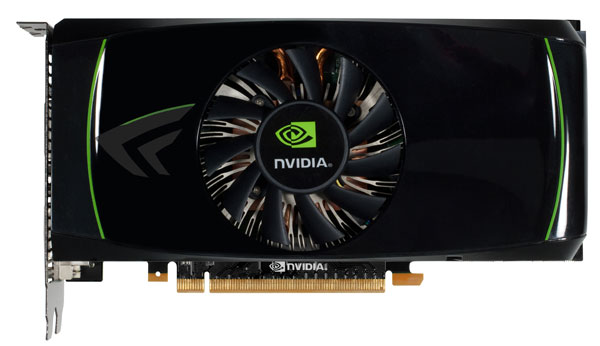
On our sample cards NVIDIA equipped the cards with 128MB 4GHz Samsung GDDR5 chips. With the cards’ memory only clocked at 3.6GHz effective this leave some room for overclocking, but as with GF100 the limit is NVIDIA’s memory controller rather than the chips. Any notable memory overclocks are just as likely to reduce performance due to error detection and retransmission as they are to improve performance.
Both the 1GB and 768MB GTX 460s require 2 6pin PCIe power plugs, which are mounted facing the rear of the card. As the ATX power limit for a card with 1 plug is 150W, this makes 2 plugs required on the 160W TDP 1GB card while on the 150W TDP 768MB card it’s both a holdover from the 1GB card and an insurance bet against the card drawing more power.
On the front of our reference cards is a port configuration identical to the reference GTX 480 and GTX 470: 2x DVI ports and a mini-HDMI port. NVIDIA went with this configuration as they believe that it’s more useful to have a mini-HDMI port than a mini-DP port due to HDMI-enabled monitors, and this hasn’t changed on the GTX 460. However like the GTX 480 and GTX 470, the GF104 GPU can only drive 2 of those 3 outputs at once.
The GTX 460 is 3DVision Surround capable just as the other GTX 400 series cards, but also like those cards this requires 2 cards in SLI to driver the requisite number of monitors. This launch effectively lowers the entry price for 3D Vision surround down from around $520 (2x GTX 465) to $400 (2x GTX 460). However we would not suggest using the feature with 768MB cards, as the extra 256MB of RAM helps a great deal at the higher resolutions created by 3DVision Surround.
Moving beyond the PCB, we have the GTX 460’s cooler. Not unlike GF104’s revised architecture, this too caught us a bit off-guard. NVIDIA has for the longest time used a blower configuration on their mid-range and higher cards, with a rear mounted blower fully exhausting hot air outside of the case. GTX 460 deviates from this in a major way, replacing the blower with a center-mounted fan. The fan sits atop a dual-heatpipe heatsink, with the heatpipes leading to raised fins on either side of the card. In turn these heatpipes are attached to a copper base which makes contact with the heatspreader capped GPU.
As a result of this design the GTX 460 is not fully exhausting, as a center fan will push air towards both ends of the card. The rear of the card is not sealed, but the card’s cover does have a plastic lip coming down roughly as far as the fan is tall. This in turn means the blades of the fan sit at the same height as the lip, blocking direct airflow out the back. With this design the card is still exhausting at least some air out of the rear of the card, but it shouldn’t be as much as a fully-open card such as our custom Asus GTX 460. Ultimately since this isn’t a fully exhausting design, it does mean that airflow within the case is a bigger issue, but we don’t believe it’s as important as it is for fully-open cards. On the positive side, this design is well suited for use with cases that have a fan behind the card (such as on our Thermaltake Spedo), as this allows a rear fan to blow fresh air directly in to the card.
One other quirk with this design is that the plastic cover for the card is not perfectly flat, but rather it’s slightly concave. We can only surmise that this is to give the card more room to draw in air in cramped situations, although in the case of our SLI setups the covered GTX 460 still ended up running much warmer. We should also note that this only applies for cards using the reference cooler – NVIDIA isn’t requiring partners to use the reference cooler, and a number of partners will be rolling out with custom coolers.
With a $199 MSRP and 150W TDP, the 768MB GTX 460 is also the first card to be of a suitable design for HTPC use. Although we don’t expect very many GTX 460s to be used for that (rather it would be for the unannounced GF106) NVIDIA is already putting plans in to motion for HTPC cards. The GTX 460 will offer full bitstreaming audio capabilities, something the GF100 GPU powering the other GTX 400 series cards could not do. This means that the GTX 460 will be able to bitstream DTS Master Audio and Dolby TrueHD along with the 8 channel LPCM audio capabilities supported by the previous GTX 400 series cards. This brings NVIDIA up to par with AMD, who has offered bitstreaming on the entire range of Radeon HD 5000 series cards.
Much like the launch of 3D Vision Surround however, this feature is late. It is not supported in the initial shipping drivers for the GTX 460 and will be made available at a later unknown date. We’ll be sure to test it along with the rest of the GTX 460’s HTPC capabilities once it’s available.
Finally, NVIDIA has been taking an interesting marketing angle with the GTX 460. In our briefings with NVIDIA, they have been heavily promoting the overclockability of these cards, and their partners have been hard at work binning cards to take advantage of this. As a result a number of cards being launched today will have some kind of factory overclock, and there should be further headroom for end-user overclocking. NVIDIA tells us that most – but not all – cards should be good for around 800MHz core. We’ll take a look at this in-depth in our overclocking section, but of the 6 cards we have, all of them surpassed this. This won’t be like the Radeon HD 5970 where a specific overclock is practically guaranteed, but if you can put up with a bit more heat and power consumption, the odds of 800MHz or more are looking very good.


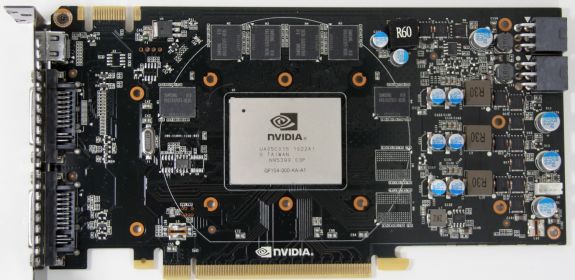
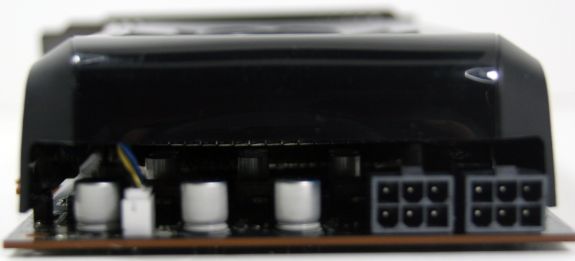
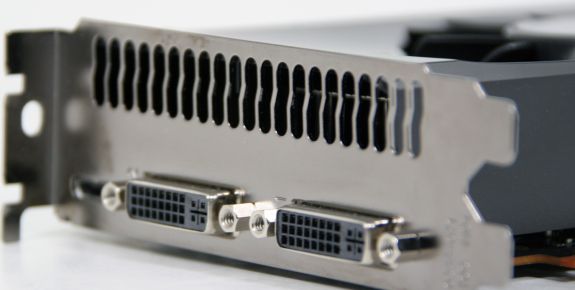
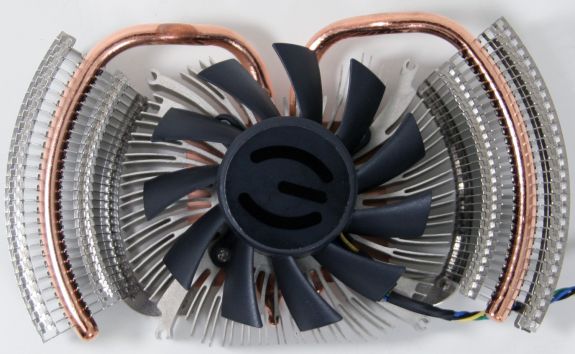
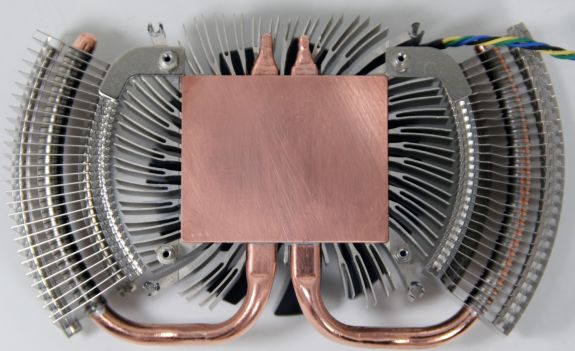









93 Comments
View All Comments
Alroys - Monday, July 12, 2010 - link
Nice review, but i would have liked to see how well they overclock.beginner99 - Monday, July 12, 2010 - link
Not a bad card. I ordered a 5850 for my new build. 460 is a little less performing but more quite. The ordered 5850 is out of stock and no due date. However till the 460's arrive it will probably also be a few weeks...Need to wait on price. usually quite a bit higher here.KITH - Monday, July 12, 2010 - link
Quiet and Quite are different words...460 is a little less performing but more *quiet*
Usually *quite* a bit higher here.
See the difference? You even used both in your own post.
chizow - Monday, July 12, 2010 - link
Looks like a great part from Nvidia that seems to hit the same target price and performance markets as the wildly 8800GT before it. Much as the G92 and its derivatives dominated the gaming market while bringing DX10 to the mainstream, GTX 460 may be poised to do the same.Griswold - Monday, July 12, 2010 - link
Its not going to dominate anything but nvidias own lineup. AMD will just - finally - drop prices, and thats that.james.jwb - Monday, July 12, 2010 - link
I agree. AMD will either drop the price on the 5850 to make this new card redundant, or not do it and make a major mistake.chizow - Monday, July 12, 2010 - link
I doubt they're willing to drop the price on the 5850 enough to truly compete with the GTX 460, especially the 768MB version.. Maybe match the 1GB version's $230 price point by going to $250 but then what does that do to the 5870? Who's going to buy a 5870 at $400 when a 5850 only costs $250? Either way it looks like Nvidia has that $200-$250 market locked tight and in a few months with MIRs that'll shift to the $160-$220 range.Lonyo - Wednesday, July 14, 2010 - link
Considering the launch prices were $260/$380, there's no reason to imagine a drop to $250 would leave the 5870 at $400.Maybe we would see something like $250/$350. Finally a drop from launch prices.
papapapapapapapababy - Monday, July 12, 2010 - link
i mean why bother? to play ports like "singularity" with bump mapped ( and terrible low res textures?) i mean the pos3 game only uses about 140MB of my video ram! ati, nvidia, intel, amd, no real pc games? > no sale. adeus suckers!mindbomb - Monday, July 12, 2010 - link
What does the presence of hdmi v1.4 ports mean?Does this card have 3d bluray capabilities not seen on other cards?